Blown Away - Issue 2
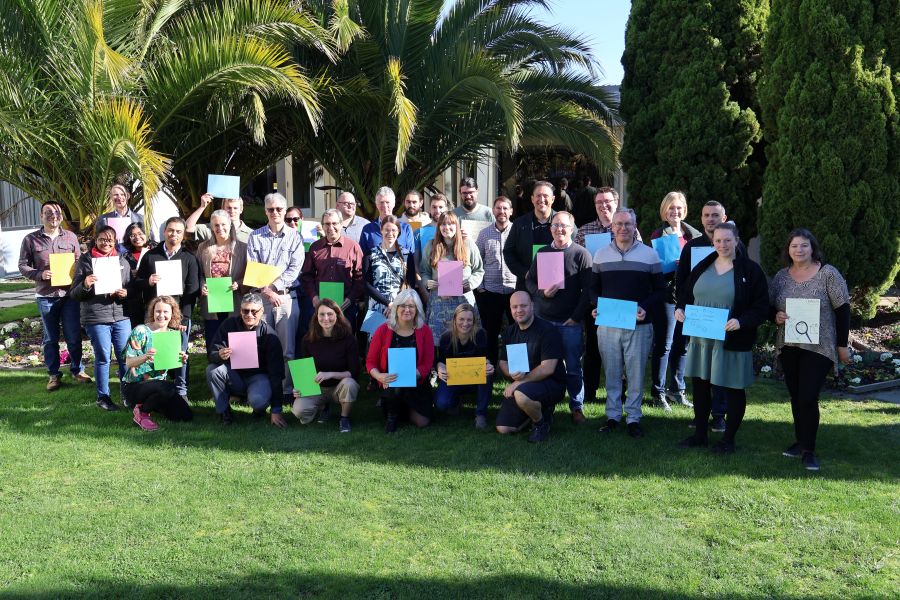
This is the second in a series of bi-annual newsletters sharing updates on the progress, team, and unexpected discoveries from this research programme.
Click here for a downloadable version of this newsletter.
New Zealand has faced the challenge of unwelcome insects and pathogens arriving by wind and establishing themselves here. This aerial pathway is a significant gap in our biosecurity defenses, one that could grow even more concerning with a changing climate. To tackle this, the "Protecting Aotearoa from Wind-Dispersed Pests" research programme is working to close that gap over the next five years.
Our researchers are focused on filling key knowledge gaps about the survival of these organisms, updating outdated wind trajectory models, and gaining a deeper understanding of how pests move and survive. The ultimate goal is to create a warning system capable of predicting when and where insects and pathogens might arrive, helping us respond quickly and effectively.
This is the second edition of our bi-annual newsletter, where we share updates on our progress, introduce our team, and highlight some of the unexpected discoveries along the way.
Following the flight of the 'wind wanderers'
Taiāwhio Bryers, Toni Withers and Steve Archer
In 2024, we had the privilege of engaging in two significant wānanga with the Taranaki Mounga Project team and local Taranaki mana whenua. The first was held at Muru-Raupatu Marae in Taranaki, followed by another at Wharepuni Marae. These gatherings allowed us to share our scientific knowledge alongside the rich mātauranga of our hosts.
Our team was encouraged to approach our mission as a story—one that honours the whenua and acknowledges the guardianship of the local iwi. We are bringing tools for biosecurity surveillance to support the whenua, and the wānanga inspired us to frame this work through a lens of respect, connection, and shared responsibility.
As part of this collaboration, our team members Taiāwhio Bryers and Steve Archer composed a poetic narrative that reflects this journey.
This story, now set to video, explains how the 'wind wanderers' — the name we’ve adopted for our work on wind-dispersed pests in Taranaki — aims to support the region’s ecological health. We hope the video will embody the values of Ngā Pou Whakatupua (Te Kāhui values) and promote whanaungatanga and manaakitanga (relationship, care, and wellbeing). This reflects our commitment to fostering strong relationships with the mana whenua of the region and all stakeholders involved.
We also wish to acknowledge the historic passing of the legal status of Te Kāhui Tupua (Taranaki Maunga, including Pouakai and Kaitake) into law in January 2025. This legal milestone underscores the deep and enduring relationship that Ngā Iwi o Taranaki have with their whenua.
As we move forward, we are inspired by the verbal story that emerged from these hui—a story that we believe will continue to grow and evolve over time.
This story is not just about science; it is about building whanaungatanga (relationships) between researchers and the communities of Taranaki, as we work together to achieve meaningful outcomes for the region.
Reference document: Taranaki Maunga Collective Redress Deed between the Crown and Ngā Iwi o Taranaki
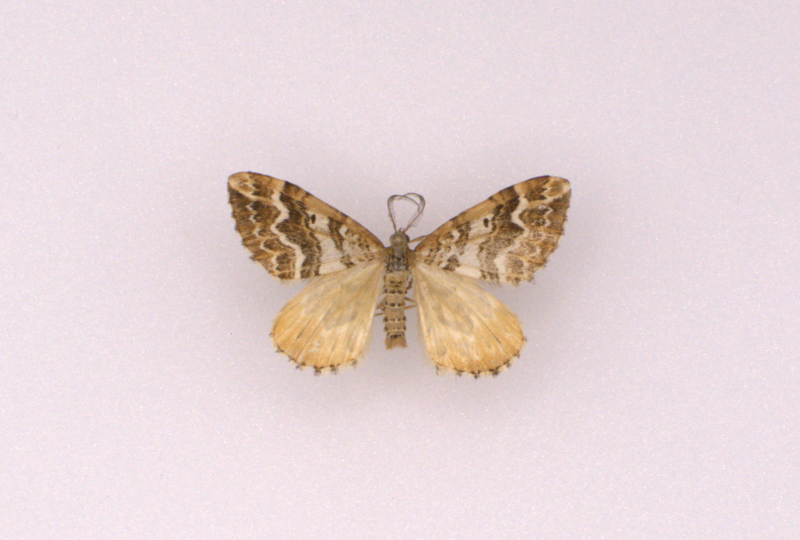
Te Papakura o Taranaki moth surveillance - Summer 2024/25
Mike Davy, Taiāwhio Bryers and Toni Withers
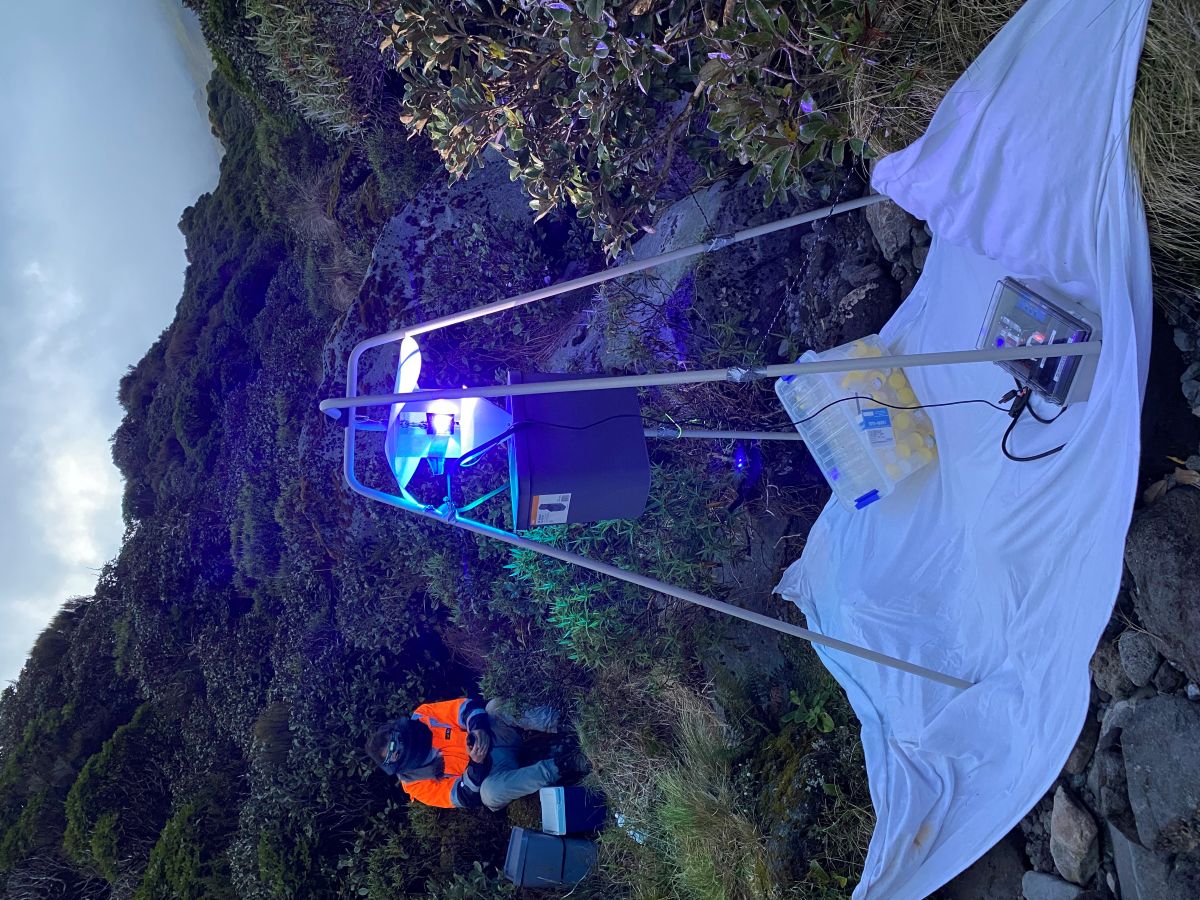 Lepidoptera (moth) surveillance plays a vital role in Research Area 4, with a particular focus on intercepting long-distance migrants from across the Tasman Sea. By studying these windborne moths in the Taranaki region, we aim to enhance our understanding of the atmospheric conditions that prevail during their migration journeys. However, locating these migrants is no simple task. In the process we intercepted many native moths, which has the added benefit of expanding our knowledge of the biodiversity of moth populations on the maunga. Moth surveillance typically involves attracting adult moths to a light source, capturing the larger species (macro-moths), and carefully examining their markings to determine whether they are native or migrants.
Lepidoptera (moth) surveillance plays a vital role in Research Area 4, with a particular focus on intercepting long-distance migrants from across the Tasman Sea. By studying these windborne moths in the Taranaki region, we aim to enhance our understanding of the atmospheric conditions that prevail during their migration journeys. However, locating these migrants is no simple task. In the process we intercepted many native moths, which has the added benefit of expanding our knowledge of the biodiversity of moth populations on the maunga. Moth surveillance typically involves attracting adult moths to a light source, capturing the larger species (macro-moths), and carefully examining their markings to determine whether they are native or migrants.
The team has received a permit from the Department of Conservation that aligns with iwi wishes to predominantly sample moths alive from the National Park, with the intention of releasing the majority back to the maunga once they have been identified.
As of December 2024, our entomologists have successfully intercepted a total of 546 macro moths from the Taranaki Maunga, with 340 of those released back to the maunga, following identification. We are grateful for the assistance of the online citizen science platform, iNaturalist, which helps us confirm the identification of the remaining 206 specimens that were returned to Scion.
You can explore our findings on the platform through our observations page on iNaturalist.
Through this work, we’ve identified 62 moth species from Te Papakura o Taranaki, representing approximately 20% of the known macro-moth species in the North Island. Among the most common moths captured were the Green Marked Owlet (Ichneutica insignis) in November and the Grey-brown Cutworm (Ichneutica mutans) in December 2024. Exciting discoveries also included two species of carpet moths, Tatosoma monoviridisata and Asaphodes cataphracta (Western Brown Carpet), which were previously only found in the South Island.
Additionally, 13% of the identified species are considered uncommon, with fewer than 30 observations of each on iNaturalist.
Among the moths we identified, only one species was exotic: Chloroclystis filata, the Australian pug moth. This small brown moth is widespread across Aotearoa and feeds on the flowers of various shrubs, including gorse and Senecio species. Another notable find was the native Agrotis ipsilon (Greasy Cutworm), which is believed to have established itself in Aotearoa from Australia. This species may still occasionally migrate from Australia, as noted by Dr. Fox in 1978. His research highlighted that Agrotis ipsilon was most common in Taranaki during February and March, with several moths intercepted on offshore platforms in 1970, carried by strong westerly winds. This reinforces the theory of long-distance migration from Australia to the Taranaki Coast.
This surveillance contributes not only to the scientific understanding of pest migration but also deepens our connection to the whenua and its ecosystems. We continue to work alongside local iwi and stakeholders to ensure that our methods respect the cultural significance of Taranaki Maunga while advancing the knowledge of Aotearoa’s biodiversity.

Meaningful migrants: Tracking the wanderings of migrant butterflies
Lucas Larraman
The delightfully colourful Blue Moon, Australian Painted Lady, Lesser Wanderer, and Blue Tiger butterflies often visit our shores from Australia or Oceania. Citizen science observations of these migrants can help us understand the weather patterns that guide these beautiful butterflies on their long journey and offer insights into the atmospheric conditions that may bring pests to our shores.
These visually striking butterflies are frequently recorded by nature watchers on iNaturalist, providing valuable data on their potential arrival timing. However, a time lag between the butterfly’s arrival and its sighting makes it challenging to link specific weather patterns to their arrivals.
To tackle this, the team analysed case studies of butterfly clusters observed over a period of a week. Using virtual air parcels and computer simulations, they tracked 3D backward trajectories to identify the butterflies' origins and any atmospheric connections between Australia, Oceania, and Aotearoa.
Most cases revealed strong connections, pinpointing the exact arrival day. This approach helps reduce uncertainties around butterfly arrivals and provides a tool for understanding the weather conditions influencing their remarkable migration.
Understanding the survival of rust fungi during atmospheric travel
Michael Bartlett
 When pests like fungi travel through the atmosphere, environmental conditions during their transit can significantly impact their survival. To better understand this process, our team is conducting experiments to examine how environmental factors affect the survival of fungal spores—specifically, poplar rust (Melampsora laricis-populina)—as they travel through the air.
When pests like fungi travel through the atmosphere, environmental conditions during their transit can significantly impact their survival. To better understand this process, our team is conducting experiments to examine how environmental factors affect the survival of fungal spores—specifically, poplar rust (Melampsora laricis-populina)—as they travel through the air.
Rust fungi, like poplar rust, produce large numbers of spores that are carried by the wind. Some of these spores are thought to have travelled across vast distances, including from Australia to Aotearoa (New Zealand). In addition to poplar rust, myrtle rust (Austropuccinia psidii), a more recent arrival, is another example of a windborne fungal pathogen making its way to Aotearoa.
We know that factors like temperature and humidity likely influence the survival of these spores. However, one of the biggest challenges for spores traveling in the atmosphere is exposure to harmful ultraviolet (UV) radiation. At higher altitudes, UV radiation levels are stronger and last for longer periods each day, which can significantly reduce the spores’ ability to survive.
To investigate this, we are conducting a series of experiments using a custom-built machine that simulates UV radiation exposure. By testing poplar rust spores under various combinations of temperature, UV radiation, and controlled humidity, we aim to better understand how these conditions affect their survival. Early results have shown that high levels of UV radiation can reduce the ability of the spores to germinate, and we're working on creating survival curves that will help predict when and how these spores might reach Aotearoa. We also plan to simulate the conditions these pathogens experienced during their initial transit to Aotearoa to test the survival levels that theoretically led to successful establishment of these pests in the past.
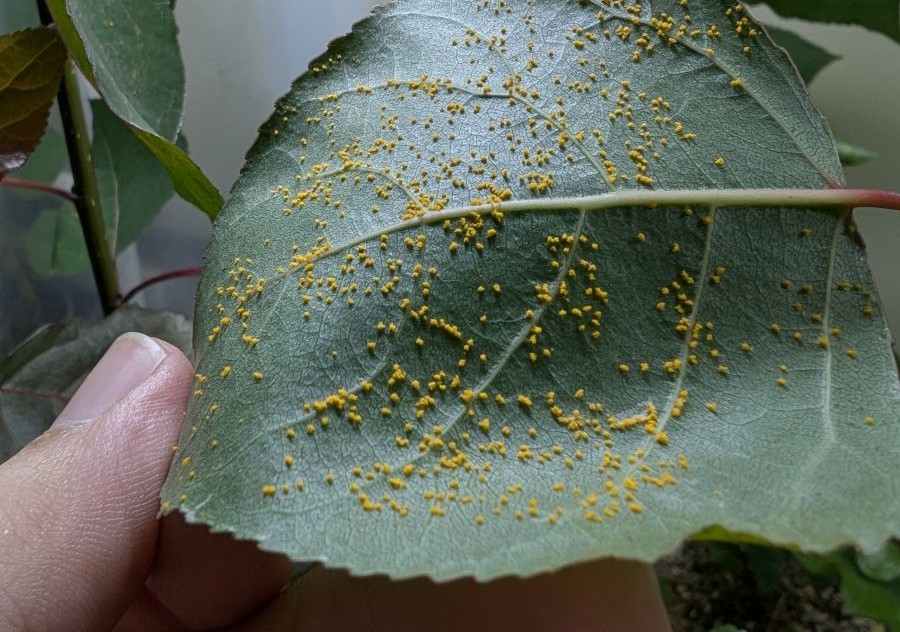
Inspiring the next generation of scientists
Toni Withers and Steve Archer
We are thrilled to offer exciting educational outreach activities for schools, titled 'Following the Flight of the Wind Wanderers'. The programme is designed to inspire young scientists and get them involved in our research on wind-dispersed species.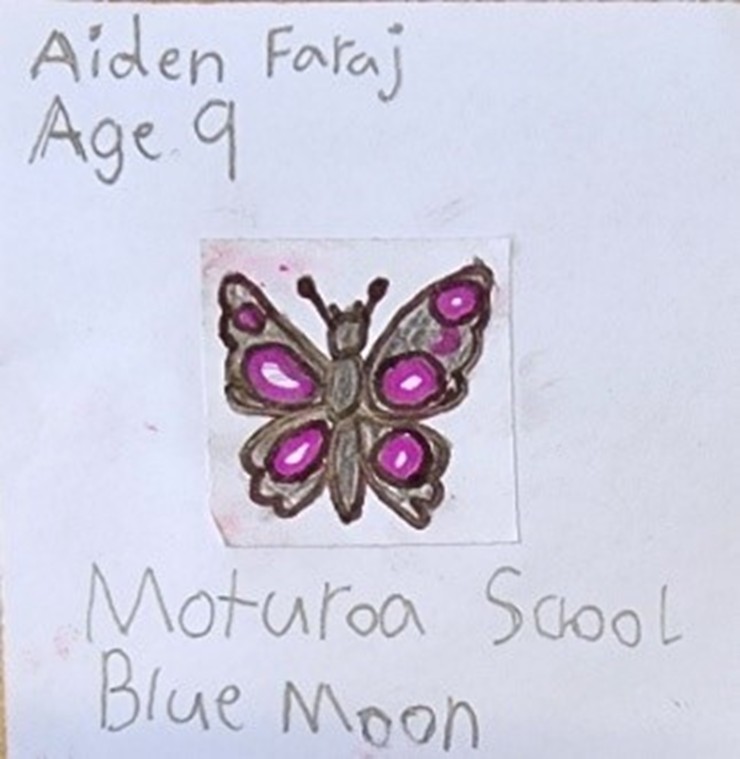
In collaboration with key partners, including Taranaki Regional Council educators and the Taranaki Mounga Project, we’ve introduced a curriculum focused on this topic at Francis Douglas Memorial College and Green School NZ. Next term, two more schools will join the programme, expanding the reach even further.
Through this initiative, students will explore important concepts like native biodiversity, invasive species, and air bridges — natural atmospheric pathways that help species travel across long distances. They will also learn how to identify migrant butterflies, catch moths, and upload their findings to our citizen science platform, iNaturalist, contributing to the Pepe Watch Taranaki project. These hands-on activities give students the chance to engage directly with science and contribute to ongoing research efforts.
Students will also dive into the fascinating world of microbes and learn how to read weather maps. They’ll discover how westerly winds are crucial to the migration of the Wind Wanderers and why these winds are key to our research.To keep the excitement alive, each child will receive a special fridge magnet as a reminder to look out for exotic butterflies. The design for the magnet was chosen through a drawing competition, with the winning artwork of a male Blue Moon butterfly by Aiden Faraj from Moturoa School.
In preparation for the programme, Taranaki Regional Council educators Gwenda Pease and Richard Carr joined Scion e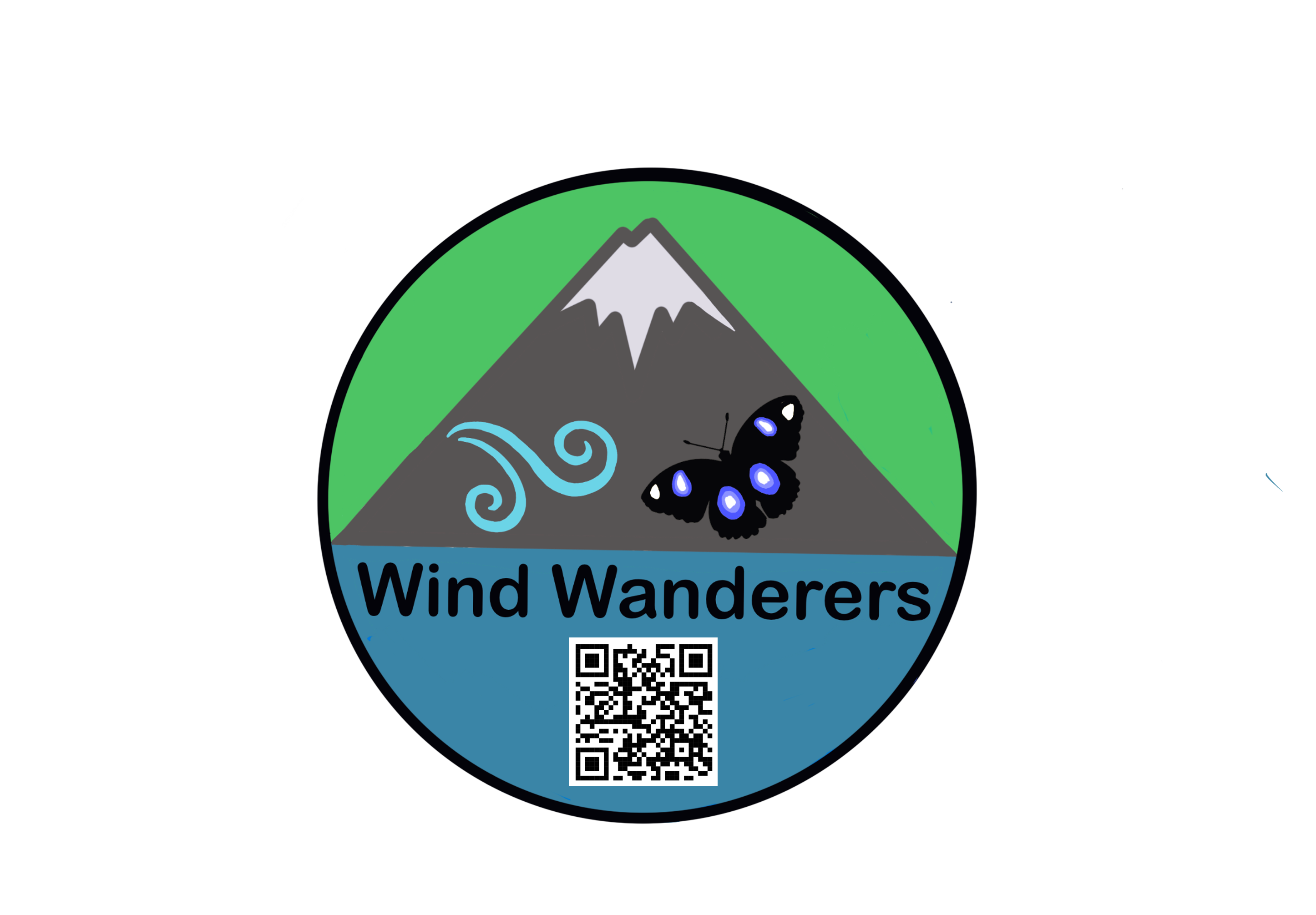 ntomologists for a memorable moth trapping evening on the maunga in December. Now, they have their own light traps and are ready to demonstrate moth trapping to students, especially when westerly winds are expected. It’s exciting to see them so enthusiastic about sharing this experience with the students.
ntomologists for a memorable moth trapping evening on the maunga in December. Now, they have their own light traps and are ready to demonstrate moth trapping to students, especially when westerly winds are expected. It’s exciting to see them so enthusiastic about sharing this experience with the students.
Looking ahead, the countdown is on for our Meet the Scientists Open Day in March 2025 at Pukeiti Gardens where 140 middle-school students from Taranaki will have the chance to meet the programme scientists and experience science firsthand through hands-on activities.
We’re excited for the new learning opportunities this event will bring to the region, thanks to our innovative outreach programme.
Meet the team
-
Dr Laura Kiely, Scion
 Laura is an atmospheric scientist at Scion, specializing in fire occurrence and smoke dispersion. With expertise in atmospheric chemistry and transport, Laura applies her knowledge to study how atmospheric conditions facilitate the arrival of wind-dispersed pests into Aotearoa. She leads Research Aim 1 of this programme
Laura is an atmospheric scientist at Scion, specializing in fire occurrence and smoke dispersion. With expertise in atmospheric chemistry and transport, Laura applies her knowledge to study how atmospheric conditions facilitate the arrival of wind-dispersed pests into Aotearoa. She leads Research Aim 1 of this programme -
Dr Wayne Schou, Scion
 Wayne is a software engineer with over 20 years of experience converting scientific knowledge into innovative software solutions. His previous research includes developing modelling systems for aerial pesticide spraying, smoke dispersion, and fire growth. In this programme, Wayne plays a key role as a developer of the Aerobiological Surveillance and Prediction Model (ASaP), which aims to predict the arrival of insects and pathogens carried by the wind
Wayne is a software engineer with over 20 years of experience converting scientific knowledge into innovative software solutions. His previous research includes developing modelling systems for aerial pesticide spraying, smoke dispersion, and fire growth. In this programme, Wayne plays a key role as a developer of the Aerobiological Surveillance and Prediction Model (ASaP), which aims to predict the arrival of insects and pathogens carried by the wind
-
Dr Stuart Moore, NIWA
 Stuart has expertise in numerical modelling and manages NIWA’s “NWP Modelling and Reanalysis” research project, through which NIWA’s operational weather modelling systems are developed. He is also the lead developer of the Plume Dispersion Emergency Modelling System (PDEMS), a tool used by MPI to predict and mitigate the spread of foot-and-mouth disease and myrtle rust. Stuart provides specialized meteorological and dispersion modelling expertise and plays a key role in the development of the ASaP model.
Stuart has expertise in numerical modelling and manages NIWA’s “NWP Modelling and Reanalysis” research project, through which NIWA’s operational weather modelling systems are developed. He is also the lead developer of the Plume Dispersion Emergency Modelling System (PDEMS), a tool used by MPI to predict and mitigate the spread of foot-and-mouth disease and myrtle rust. Stuart provides specialized meteorological and dispersion modelling expertise and plays a key role in the development of the ASaP model. -
Dr Richard Turner, NIWA
 Richard is an experienced meteorologist and atmospheric dispersion modeller with a strong track record of collaboration with MPI on wind-dispersed animal diseases and pest spread. He offers specialized expertise in meteorology and dispersion modelling to support the ASaP model development.
Richard is an experienced meteorologist and atmospheric dispersion modeller with a strong track record of collaboration with MPI on wind-dispersed animal diseases and pest spread. He offers specialized expertise in meteorology and dispersion modelling to support the ASaP model development.
